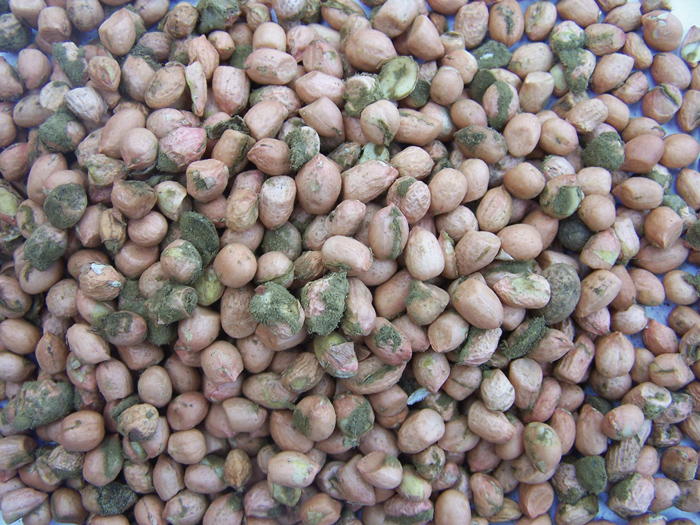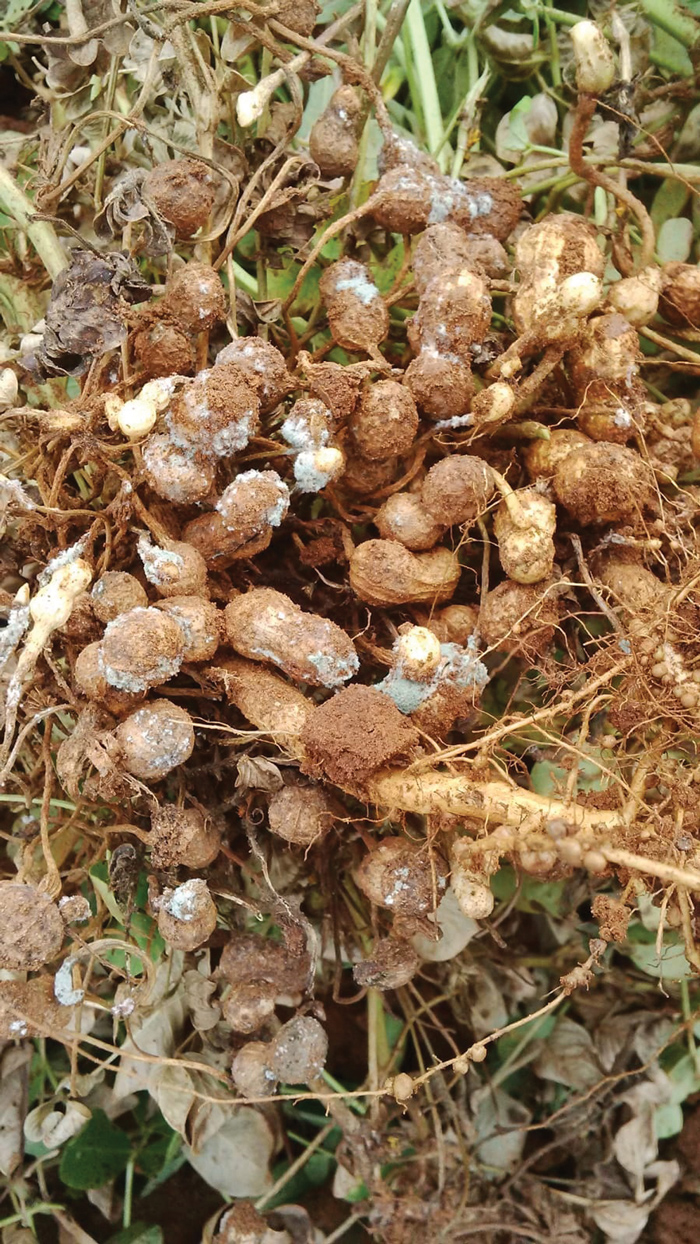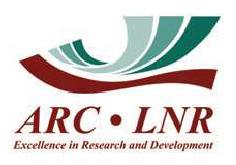
ARC-Grain Crops, Potchefstroom
The groundnut or peanut (Arachis hypogaea L.) is an important food and fodder crop in the farming systems of developing countries. The seed is high in oil (close to 50% for many varieties) and protein (around 26%) and an important source of vitamins and dietary fibre.
Groundnuts, like all legumes, are also important due to their ability to fix atmospheric nitrogen, a critical and often limiting nutrient for crops in degraded soils. Global groundnut production is concentrated in Africa (40%) and Asia (55%). In South Africa groundnuts are primarily produced by large-scale commercial producers and subsistence farmers in certain parts of the country. From the groundnuts produced by large-scale commercial producers roughly 80% is used for consumption, whereas the rest is crushed. Groundnuts are consumed as peanut butter; crushed and used for the groundnut oil; or simply consumed as a snack (roasted, salted or in sweets). Resource-limited farmers, especially in the northern and eastern parts of South Africa, grow groundnuts mainly for own consumption. Groundnuts are an important source of nutrition in the northern KwaZulu-Natal and Mpumalanga areas. The crop can also contribute to more viable and sustainable cropping systems in other parts of the country.
Toxins
Many agricultural commodities are susceptible to several diseases caused by fungi, viruses and insect pests. Many fungi are free-living organisms capable of surviving in the environment (soil, air and water) and can easily find their way into crop products especially when the weather conditions are suitable. Some fungi of concern can contaminate crops with toxins. The toxins produced by fungi are called mycotoxins (myco = fungus; toxin = poison). The fungi Aspergillus flavus and Aspergillus parasiticus are the most common sources of food contamination the world over. These fungi produce a mycotoxin called aflatoxin (from Aspergillus flavus toxin). When consumed via contaminated crops or products, aflatoxins can cause several negative health effects in humans and livestock.

Photo: Dr Ranajit Bandyopadhyay (IITA, Ibadan, Nigeria)
In groundnuts, high aflatoxin levels pose human health risks and are also a barrier to expanding trade in and commercial use of groundnuts. Eating food contaminated with aflatoxins leads to aflatoxin poisoning, also called aflatoxicosis. Regular consumption of low dosages for a long time (chronic exposure) leads to liver damage, immune suppression, malnutrition and stunted growth in children, while sudden high-level ingestion of the toxin (acute exposure) can lead to death.

Photo: Dr Ranajit Bandyopadhyay (IITA, Ibadan, Nigeria)
Biocontrol agents
There are a number of control measures for aflatoxins and these have been discussed at length in various articles and publications. These are used in an integrated disease management system, but unfortunately, they are not always effective. The use of a biocontrol system in the integrated management system has been well researched and developed. Application of biocontrol agents to the crop such as Aflasafe® or Aflaguard® is based on the competition between two isolates of Aspergillus, i.e. the non-toxigenic and toxigenic forms.
This biocontrol technology makes use of carefully selected non-toxigenic strains that can safely outcompete and virtually eliminate their toxic relative, effectively reducing contamination of the maize grain in fields. A single application of Aflasafe two to three weeks before flowering can prevent aflatoxin contamination throughout, even when grains are stored. This technology is very effective, but has been met with some circumspection from many researchers and individuals in the groundnut production and processing systems. The primary concern is that as these aflatoxin- and non-aflatoxin-producing isolates are of the same species, they may be sexually compatible and that non-toxigenic strains may revert to toxigenic strains. This is a fair observation for people who do not understand the genetics of this fungus.

Photo: Maria van der Merwe (ARC-GC, Potchefstroom)
However, this is not possible. Although they are of the same species, not all isolates are capable of being compatible and thus they are not able to have progeny that may cause non-aflatoxin-producing isolates to revert back to toxigenic strains. This is because within the species, isolates belong to specific mating types. The non-aflatoxin-producing isolates that are carefully selected for use in these biocontrol systems are of the same mating type and cannot cross with other compatibility groups. Due to this careful selection, the non-aflatoxin-producing isolates compete with the other naturally occurring aflatoxigenic isolates. But when applied early enough, they infect early and thus keep the harmful isolates out. Another concern was that these isolates may affect the flavour of the groundnuts, but studies have shown this not to be the case. This technology will play an important role in reducing aflatoxin contamination in groundnuts.
A number of years ago the author of this article was involved in a study where the product called Aflaguard was tested in groundnut fields planted commercially in South Africa. The product was brought in from the USA and used locally. Unfortunately, the product did not reduce aflatoxin levels significantly. Possible reasons include that the isolates were not compatible in South Africa as growth conditions locally differ considerably from those in the USA. The viability of the product was also questioned, as there was no control over the conditions the product was subjected to and this could have affected viability. When plated out, the viability of the product was very low and possibly explains the poor efficacy.
Another product, called Aflasafe, is being developed. This is largely being driven in a number of African countries with great success by Dr Peter Cotty (USDA/ARS, School of Plant Sciences, University of Arizona, Tucson, USA) and Dr Ranajit Bandyopadhyay (IITA, Ibadan, Nigeria). They use local isolates which are collected from within each country and then screened to determine compatibility groups. The non-aflatoxin-producing isolates that were in a specific mating type are selected for that specific country. These are then commercially produced within the country and applied with great success. This may be a novel technology to be developed in South Africa for both commercial producers and small-scale farmers to ensure safe aflatoxin levels in groundnuts. 
Producing aflatoxin-free groundnuts ensures food safety. The health and economic well-being of producers and consumers of groundnut products are an important investment in the agricultural sector. Use of good crop production practices and post-harvest handling techniques together with non-toxigenic strains can effectively reduce aflatoxin contamination and maintain the quality of the produce. Such efforts would then open up opportunities for producers to access rewarding markets that currently have stringent quality standards.



















